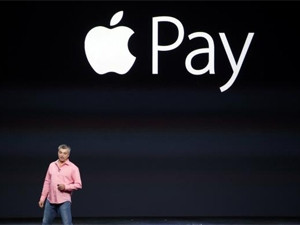
The long anticipated entrance of Apple into the payments space marks a milestone in payments, regardless of the eventual outcome of its new services.
This is according to industry observers and comes after the tech company on Tuesday announced a new one-touch mobile payments service, dubbed Apple Pay, which is set to become available from next month.
The service will allow users to make purchases, through near-field communications (NFC) technology by holding a phone near a sensor at participating retailers. This follows the introduction this year of a slew of similar services on the local front, such as FlickPay, Zapper and SnapScan.
But World Wide Worx MD Arthur Goldstuck says SA can probably not expect to see the service reaching its shores any time in the near future.
Superior ecosystem
It does, however, hold great potential if the state of the local payments ecosystem is heeded and catered to, he says. "The real standout feature of Apple Pay - as with most of the company's initiatives - is how well integrated it is with software and payment executions.
"It is a great example of Apple's understanding of the ecosystem, in this case the payment ecosystem. Many of the mistakes made in SA are due to the mistaken notion that a superior solution means you can conquer the market. You have to have a superior payment ecosystem - not just a tech solution to do that. That is where Apple gets it right."
While that in itself does not mean Apple will conquer the market, the company has an advantage in that it can integrate its half a billion iTunes users into a payment network. "At the same time, this doesn't mean all these people will actually use the system or guarantee market dominance for Apple."
Goldstuck says the scenario is reminiscent of when Apple launched iCloud. "A lot of Apple fans described it as game over for other cloud players, but that is nonsense as it's a very competitive market. And similarly, the payments market is intensely competitive."
Gilles Ubaghs, senior analyst of financial services technology at Ovum, notes that - perhaps unsurprisingly, given Apple's proclivity for closed garden approaches - Apple Pay follows a more traditional device-based secure element and avoids using cloud-based host card emulation services. "This will add to security and enable card present transaction rates which will please merchants."
Ubaghs says, although Apple Pay has been much hyped, the service is likely to remain niche at the point-of-sale for some time, as overall device penetration remains relatively low and the service is initially US-based only. "More critically, the in-store experience provides little major incentive for use at this point, and while Apple benefits from its iTunes membership, the lack of tie in to loyalty or other features may at least initially limit consumer interest beyond early adopters."
Where Apple Pay is likely to have a bigger impact, he says, is in the remote mobile payment space, where it allows for rapid online payment checkout via Apple's fingerprint biometric technology TouchID. "[This presents] a much clearer benefit to consumers and merchants alike in reducing transaction friction."
The decision to release an Apple Pay API to developers will likely prove the biggest revolution over time, says Ubaghs. "This allows merchants, and other third-party payment providers, to develop new payment services revolving around that core Apple payment service. Opening up its service in this way will help to potentially cement Apple at the centre of a broader payments ecosystem by enabling a broader range of services."
Share